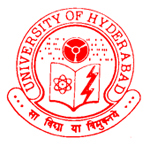The Chitosan Code
Structure/function relationships of chitosan oligomers and polymers with non-random patterns of acetylation
Prof. Dr. Bruno Moerschbacher
Chitosans, i.e. partially N-acetylated poly-glucosamines derived from the second most abundant biopolymer chitin, a waste by-product of the shrimp peeling industry, is one of the most versatile and most promising biomaterials. It has superior material properties, e.g. in film and gel forming or for the production of nanoparticles, and it has intriguing biological functionalities, e.g. antimicrobial, plant strengthening, and wound healing activities. However, detailed structure/function relationships and modes of action need to be known in order to understand these properties on the nanoscale or molecular and cellular levels, and to then develop reliable agricultural or biomedical applications. We aim at such an understanding using a combination of enzymatic, bio- and nanotechnological, biochemical and physico-chemical methods for the production and characterisation of partially acetylated chitosan oligo- and polymers. This is done in close collaborations with colleagues within MCGS and beyond.
PhD projects to be supervised by Prof. Moerschbacher can be designed in the area of enzymatic or chemo-enzymatic production, enzymatic/mass spectrometric fingerprinting analysis, molecular recognition, and biological activities of chitosans with non-random patterns of acetylation (PA). Projects are typically designed to include some, but not necessarily all of the following steps (as some enzymes are already available, a project does not necessarily have to start with step 1, but any project needs to include at least one step in India):
- identification, cloning, and heterologous expression of a novel chitosan modifying enzyme (e.g. from the metagenome of soil with a history of chitosan exposure in a chitosan factory, or from a known chitosanolytic organism, e.g. by bioinformatic (meta)genome searches (possibly together with Ulaganathan);
- characterisation and optimisation of the enzymatic properties, e.g. narrowing the substrate specificity or enhancing the processivity by protein engineering (possibly together with Podile), typically preceded by 3D computer modeling and substrate docking (possibly together with Lalitha);
- enzymatic modification of partially acetylated chitosans to generate non-random PA, fingerprinting PA-analysis by mass spectrometric analysis of chitosanolytic products (possibly together with Mormann, Hippler); biotechnological or chemical synthesis of standards (possibly together with Balamurugan, Ramu Sridhar);
- characterisation of the potential of isolated enzymes and their products to protect plants from disease (possibly together with Podile); elucidation of the mode of action, e.g. identification and characterisation of the binding site (possibly together with Goycoolea, Müthing, Swamy), or transcriptomics (possibly together with Podile);
- characterisation of the potential of isolated enzymes and their products to support scar-free wound healing (possibly together with Götte, Grobe, Seidler, Goycoolea); elucidation of the mode of action, e.g. identification and characterisation of the binding site (possibly together with Goycoolea, Müthing, Swamy).



